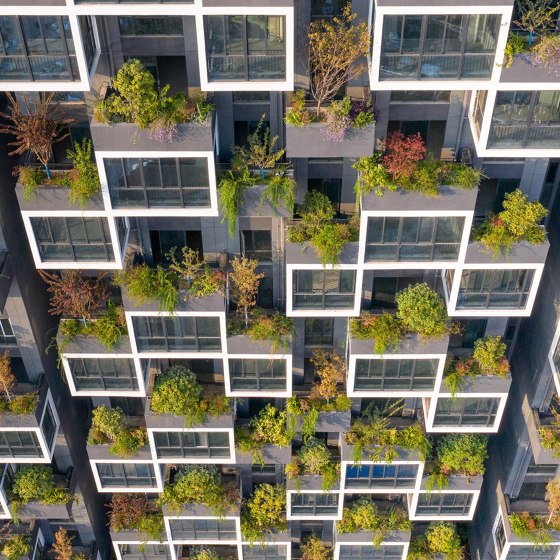Shimao Qianhai Center / Gensler
Shimao Qianhai Center / Gensler


Text description provided by the architects. At nearly 300 meters tall, Shimao Qianhai Center in Shenzhen stands as one of Qianhai’s landmark towers and one of the world’s tallest structurally twisting buildings. The building tapers and simultaneously rotates, creating striking imagery with twisting curtain walls and structural columns. The tower sits as the tallest building within a high-density urban block surrounded by six towers. It is designed to both harmonize the cluster of buildings into a wholistic composition and stand out as an iconic structure.


Vision. Two volumes rise gracefully from the ground towards the sky, each representing its own identity yet inextricably intertwined in a virtual dance. The building’s soaring, spiraling form represents aspirations toward a harmonious future between neighbors Shenzhen and Hong Kong. It stands as a symbol of innovation and optimism. The positioning of the tower maximizes the views of the bay and the surrounding hills while minimizing views between towers. Given the density of the site, the rising tower’s gradual twist responds well to its context by relaxing spatial adjacencies and freeing up views. The tower’s rigorous geometry is based on a perfect square split into two distinct volumes. It tapers and rotates 45 degrees as it rises from its extruded rectangular base to the apex. At the building’s crown, the volumes cleave apart to reveal an axial connection, a metaphor for the connection between the two geographies and a link between mountain and sea. The resulting spiraled geometry is both aesthetically distinctive and technically functional for environmental resiliency goals. The rotation mitigates typhoon-level wind loads prevalent in Qianhai and reduces the overall weight and amount of structure required.


Parametric Design. To create an interior with more potential for transformational interior plans, the structural system is rotated to follow the geometry of the building. The column grid and curtain wall modules are aligned at every level in order to create efficient and flexible interior workplace environments. The subtle tapering and rotation allow for dynamic spatial configurations within the interior. The application of parametric design ensures the precise design of complex glass curtain wall panels.



Resilience. The podium envelope is effectively shaded by the external fins, and the glass curtain wall with a light-to-solar gain ratio of 1.7 sets a high-performance standard in hot climates. The twisting building form and recessed corners reduce the lateral wind loads significantly, downscaling the structural members and embodied carbon. The project has achieved LEED Gold precertification and China Three Star GBEL precertification.


Urban Context. The developer wanted an iconic building that was a successful commercial endeavor with environmental resiliency. As such, our work with the planning department centered on connectivity and integrated planning. We made sure to address the micro block and the multi-level interconnectivity between the buildings to mass transit and the wider neighborhood. We paid close attention to the spaces in between buildings: those areas that stitch together the pedestrian environment. The attention to detail of the podium and porosity at grade result from this desire.


The podium interweaves with pedestrian networks on multiple levels and connects to the below-grade Metro Station. Its carefully crafted forms, highly articulated facades, and variance in material selection and color between cool reflective glass and warm copper notes create a comfortably scaled environment that meets the pedestrian at their own level. The porosity, multi-level retail programming, and lively plaza all highlight the importance of activated public space and the spaces in between the towers.






